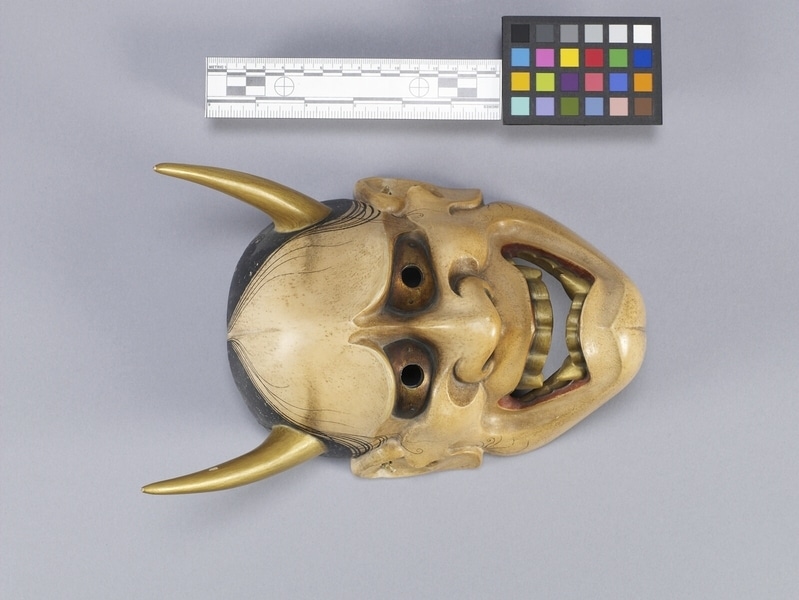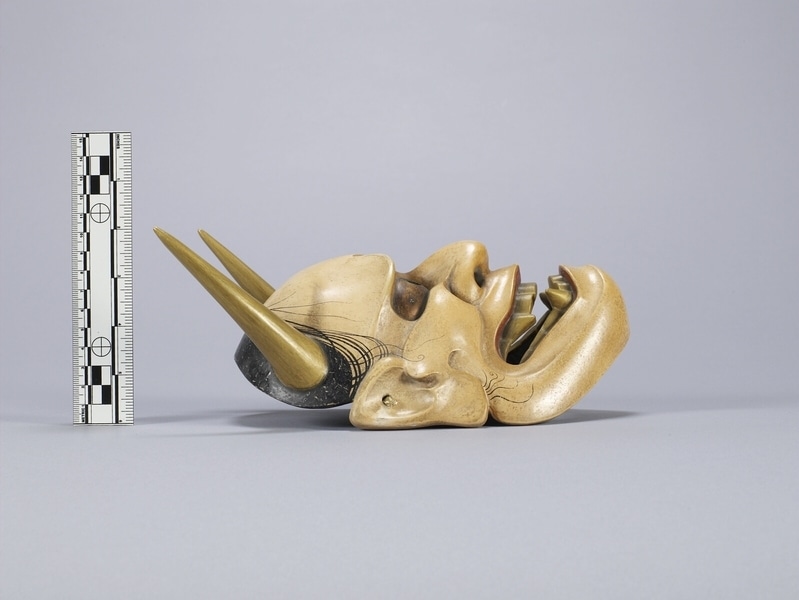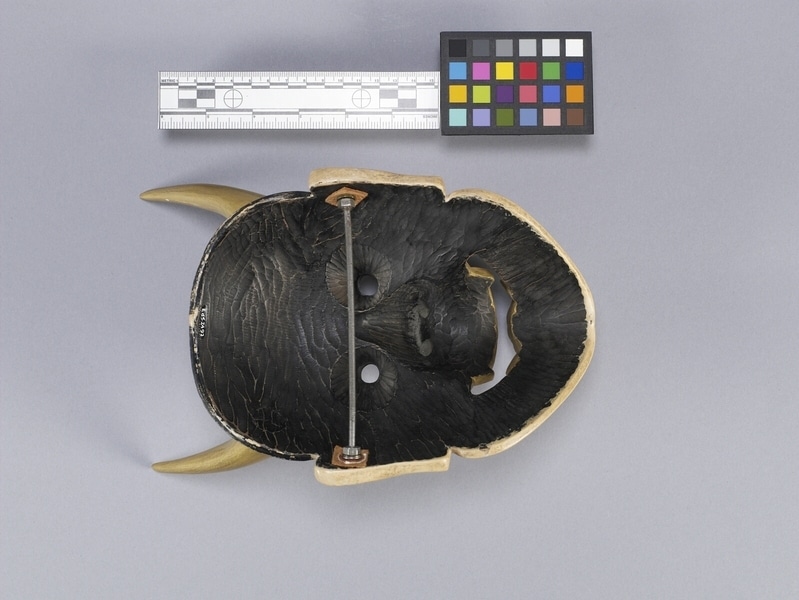Noh Mask Item Number: Ed5.2497 from the MOA: University of British Columbia



Description
Carved wooden Noh mask of "Hannya"; brown, with gold horns and teeth, and bronze eyes. Black painted hair, with stray strands falling over the face, prominent ears.
History Of Use
Japanese Noh plays are the classical dramas of Japan, tragic in character and based upon literature dealing with the court in a remote age. The audience for this drama has always been drawn from an aristocratic circle. Men play both the male and the female roles in Noh theatre, and masks are worn primarily by the shite (main actor). Masks of women broadly represent female characterizations in Katsuramono (woman or wig plays). The mask is the most significant expressive vehicle in Noh plays. An actor is meticulous about choosing the right mask to enhance his interpretation of the role. From the moment the mask is secured on his face, the actor is regarded as completely transformed into the character he portrays. A mask can be fully appreciated only when it is brought to life by a great actor on stage. Hence, the more a mask is used in performances, the more artistic and historical value it acquires. The Hannya mask is used in Kijomono (fiendish woman plays).
Iconographic Meaning
This mask depicts Hannya, the jealous woman or jealous demon. Hannya represents the fury of a woman transformed by jealousy and frustration.
Item History
- Made in Japan before 1820
- Owned by Makio Umewaka before June 18, 1984
- Received from Fyfe-Smith Memorial Oriental Collection Fund (Funding source), Museum of Anthropology Shop Volunteers (Funding source) and Makio Umewaka (Seller) on June 18, 1984
What
Who
- Culture
- Japanese
- Previous Owner
- Makio Umewaka
- Received from
- Fyfe-Smith Memorial Oriental Collection Fund (Funding source), Museum of Anthropology Shop Volunteers (Funding source) and Makio Umewaka (Seller)
Where
- Holding Institution
- MOA: University of British Columbia
- Made in
- Japan
When
- Creation Date
- before 1820
- Ownership Date
- before June 18, 1984
- Acquisition Date
- on June 18, 1984
Other
- Condition
- good
- Current Location
- Case 78
- Accession Number
- 0970/0003